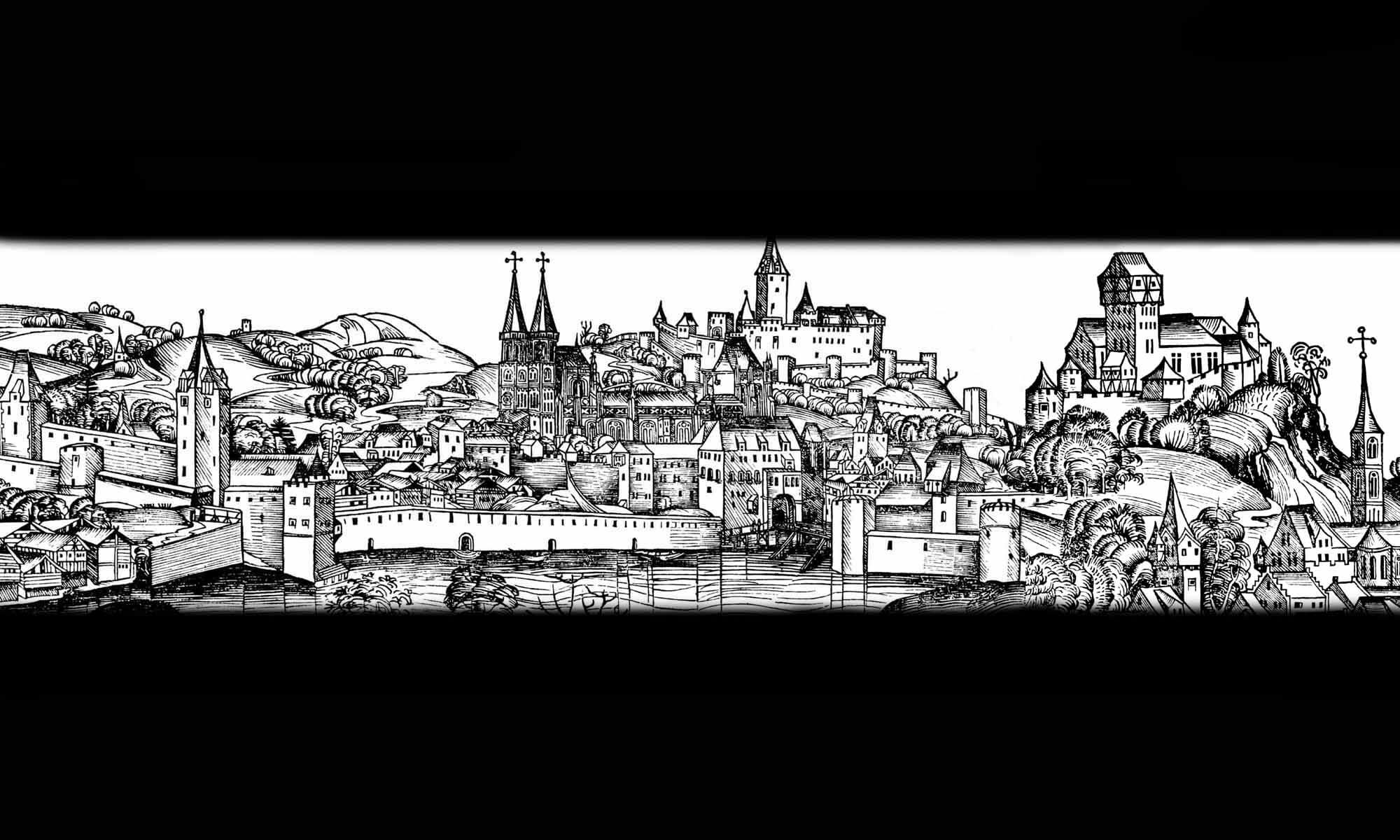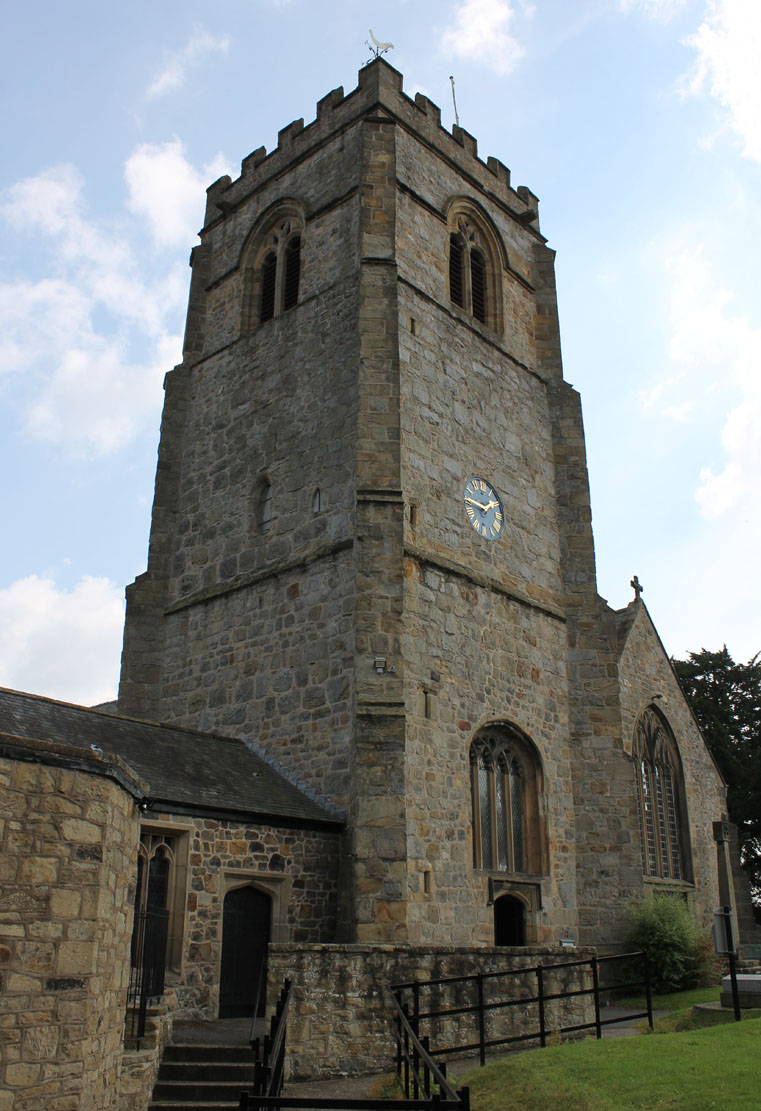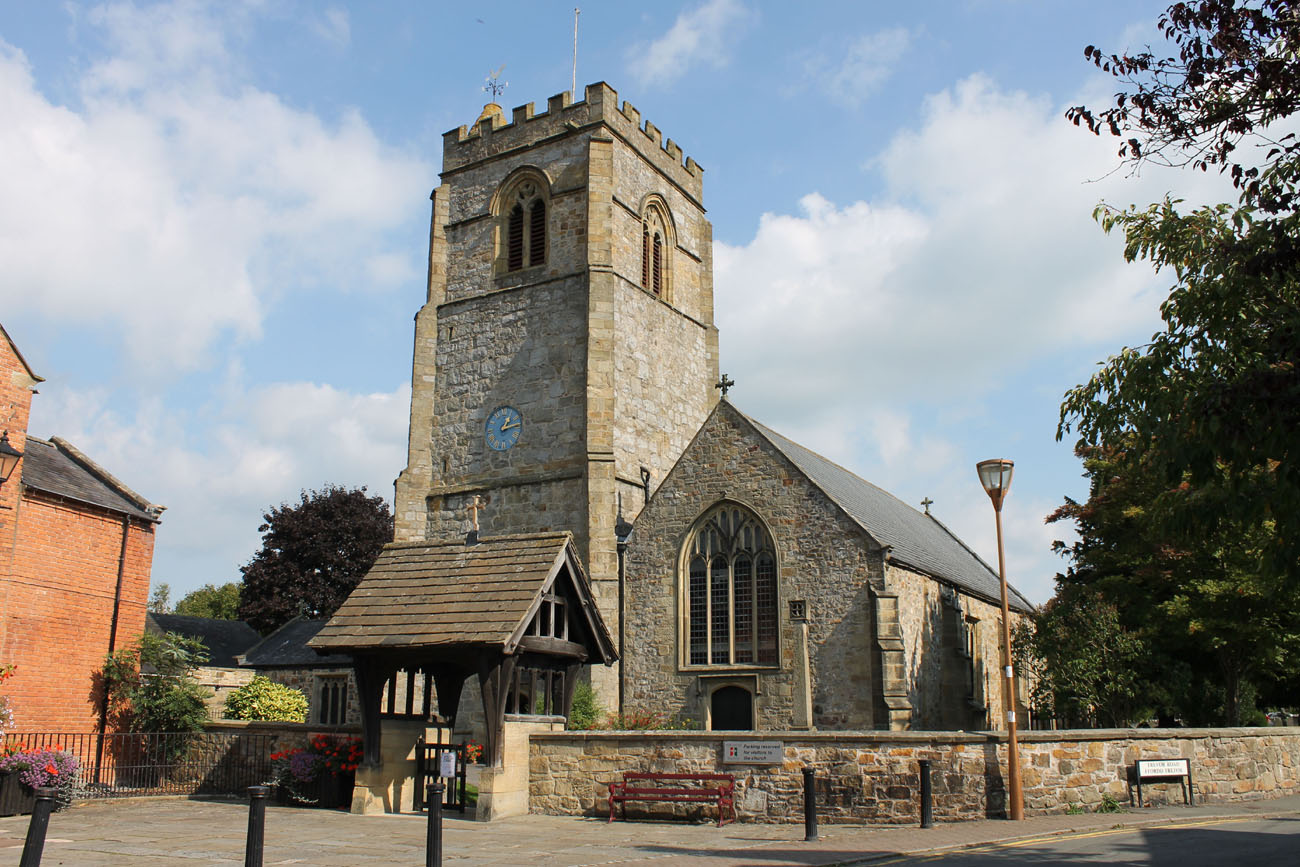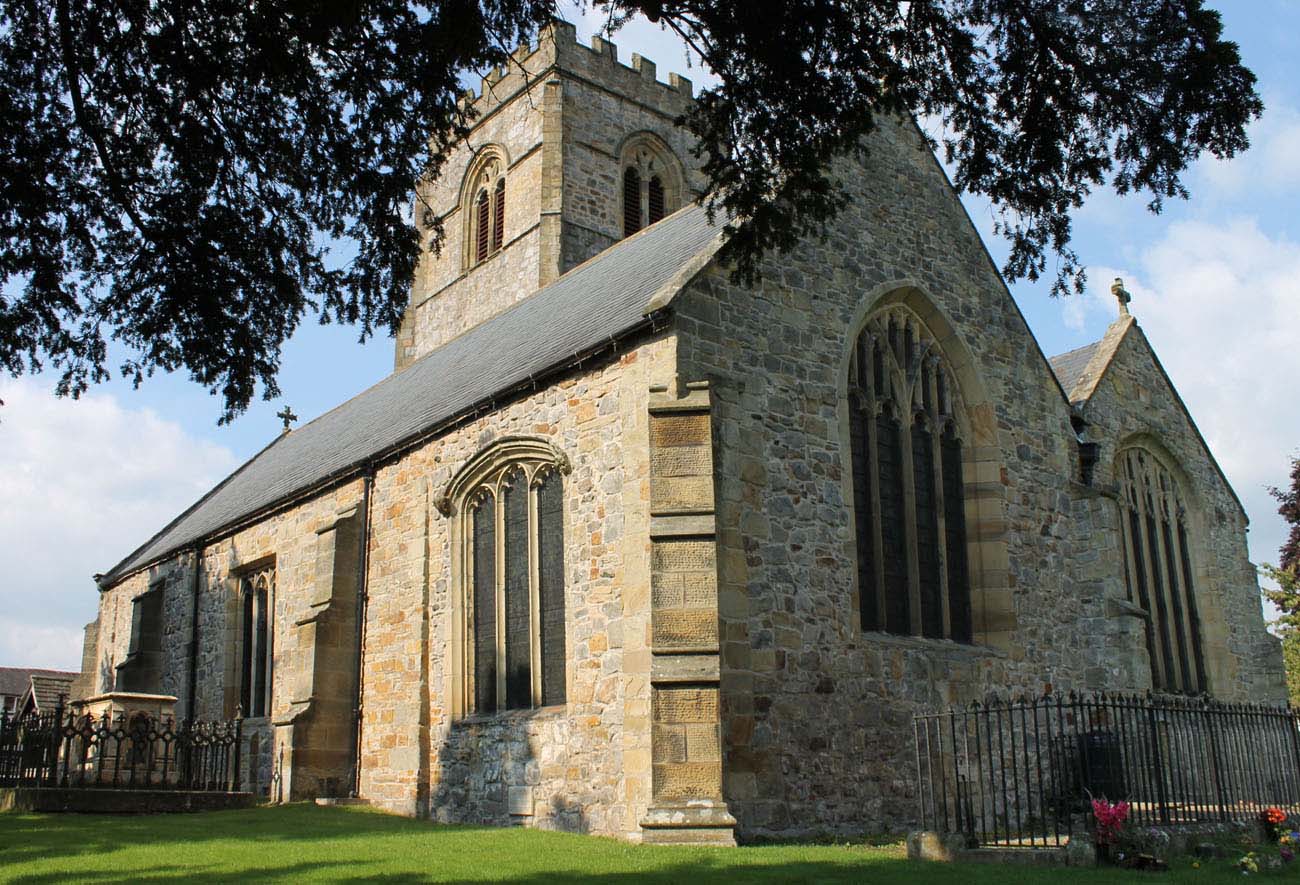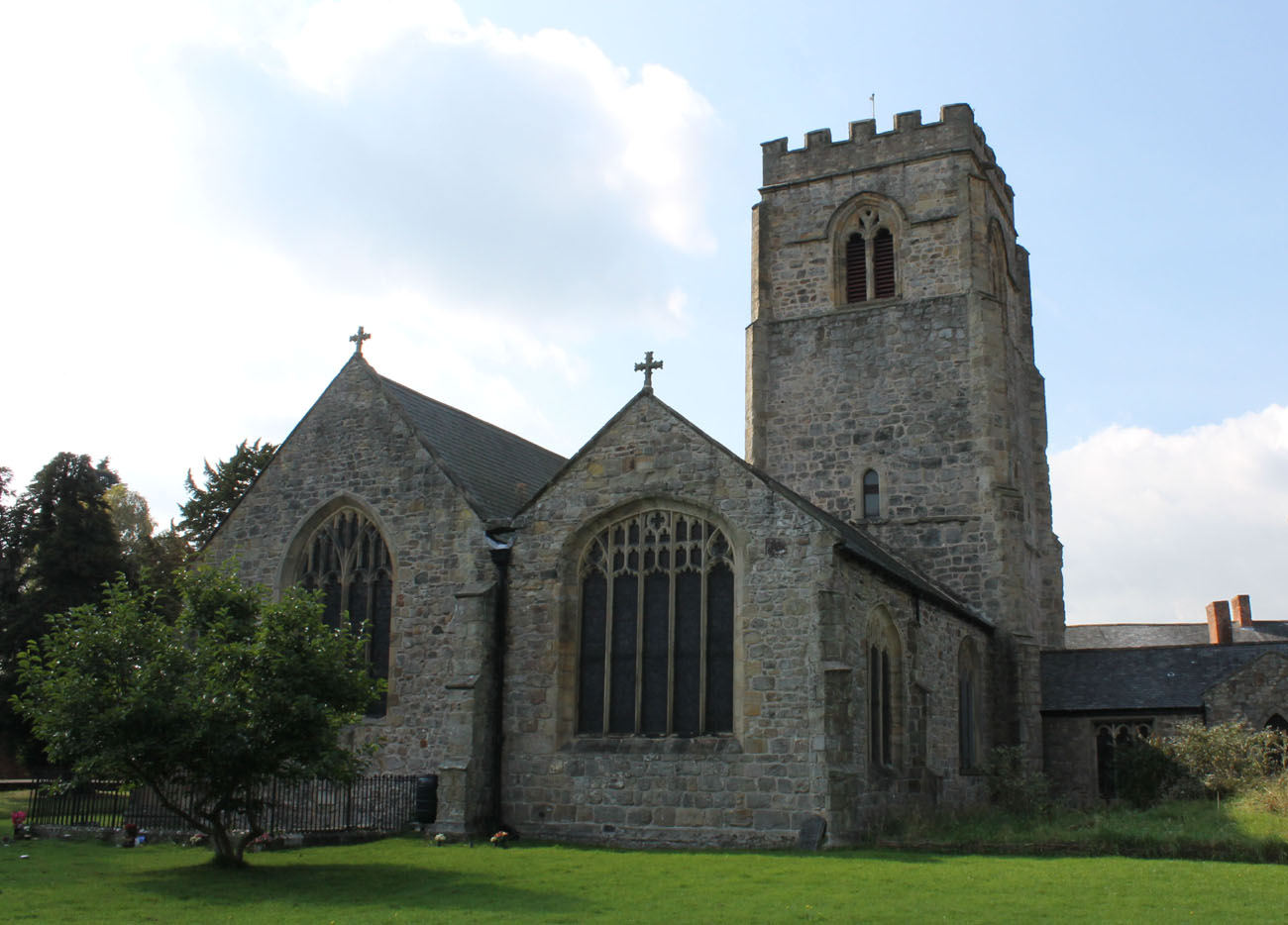History
The church in Chirk was built in the 12th century, probably on the site of an earlier temple dedicated to Saint Tysilio. The earliest written records about the church come from 1163. Around 1475, the original Norman structure was rebuilt in the English Perpendicular Gothic style and in 1519, shortly after the tower was added, William Edwards of New Hall founded the second nave. Modern renovations began at the beginning of the 19th century. In the years 1828-1829 equipment was replaced, and after 1853 the church was partially rebuilt after being damaged by a fire. Further restoration works were carried out in 1877.
Architecture
The original Romanesque church was a simple, rectangular structure, orientated toward the cardinal sides of the world, situated on the north side of the Afon Ceiriog River and on the eastern side of the relatively distant castle, dating from the turn of the 13th and 14th centuries. In the 12th century, church consisted of a single nave without an externally separated chancel. It can be assumed that it was lit by small, narrow windows, perhaps with semicircular arches.
In the early 16th century, a northern aisle was built, along with a quadrangular tower adjoining it on the west side, adjacent to the older nave on the north. The tower was reinforced at the corners with diagonally placed buttresses. It acquired a massive form and great height, contrasting with the rather low and short aisles. Its facades were divided horizontally by string courses and pierced by large, pointed windows on the top floor housing bells. It were two-light with trefoil tracery.
In the Late Gothic period, the windows of the old nave were transformed into larger, pointed ones, filled with three-light and four-light tracery, usually topped with trefoils and cinquefoils. The eastern windows of the church acquired exceptionally impressive forms, as was most common practice. Window with pointed arch and quatrefoil tracery was inserted in the south nave and a slightly later window with a low pointed arch in the north aisle, filled with elaborate five-light tracery featuring cinquefoil and mouchette motifs with trefoils.
Inside the church, the nave and aisle were divided by four arcades with strongly flattened pointed archivolts, supported by octagonal pillars. The arcades were moulded with a double chamfer on both sides, separated by a groove. The flat capitals of the pillars between the nave and aisle were also moulded. A similar, but much higher, arcade was placed between the north aisle and the ground floor of the tower. Both main parts of the church were covered by an open roof truss in the late Middle Ages.
Current state
Today, the church is a good example of a late-medieval sacral building, thanks to which it was classified in the highest category on the list of the most valuable architectural monuments of Wales and England. In the interior of its southern nave a renovated roof truss from the 15th century has survived, and in the northern aisle from the beginning of the 16th century. Early modern changes mainly affected the replaced or damaged equipment. The pseudo-crenellation on the tower also had to be reconstructed.
bibliography:
Hubbard E., Clwyd (Denbighshire and Flintshire), Frome-London 1986.
Salter M., The old parish churches of North Wales, Malvern 1993.
The Royal Commission on The Ancient and Historical Monuments and Constructions in Wales and Monmouthshire. An Inventory of the Ancient and Historical Monuments in Wales and Monmouthshire, IV County of Denbigh, London 1914.
